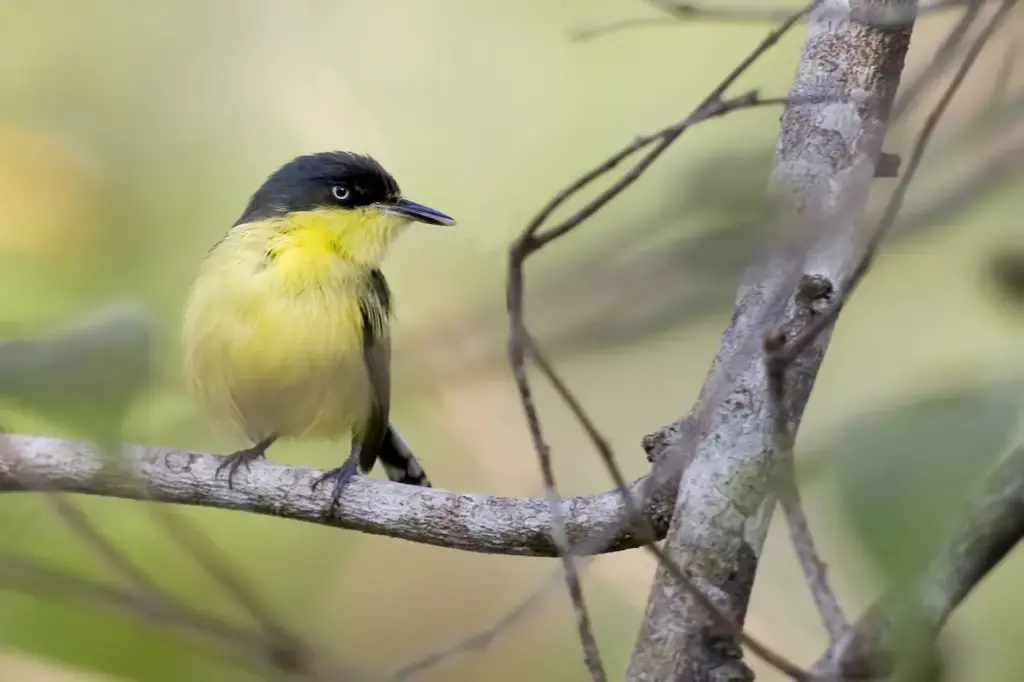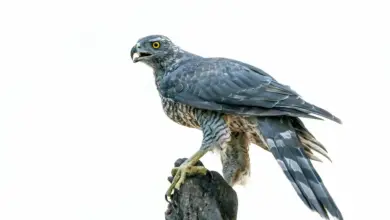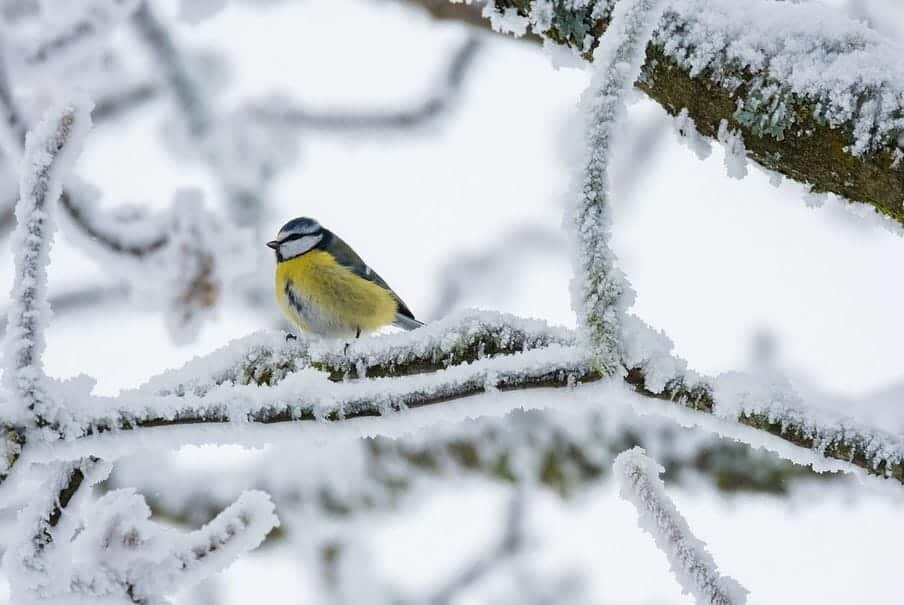Common Tody-Flycatchers
Common Tody-Flycatchers
Tyrant Flycatchers
The Common Tody-Flycatchers or Black-fronted Tody-flycatcher (Todirostrum cinereum) are found in Mexico south to northwestern Peru, eastern Bolivia, and southern Brazil. They are common in gardens, shady plantations, second growth, and the edges and clearings of forest. They avoid dense interiors of mature woodland and arid areas.
They are usually seen in pairs, hunting small insects in rapid dashes.

Breeding / Nesting:
They breed from sea level to 1150 m altitude, locally 1500 m.
Both male and female build a pouch nest with a visored side entrance, which is suspended from a thin branch or vine 1-5 m high in a tree, occasionally up to 30 m.
The female incubates the two usually unspotted white eggs for 15-16 days to hatching.
Description:
The Common Tody-Flycatcher has a tiny body and a large head with a long straight black bill. It measures 9.5-10.2 cm in length and weighs 6.5-6.8 g. The upper head is black, shading to dark grey on the nape and dark olive-green on the rest of the upperparts. The usually cocked tail is black with white tips, and the wings are blackish with two yellow wing bars and yellow edging to the feathers. The underparts are entirely yellow.
Males and females look alike, but juveniles have a greyer upper head, buff wing markings, and paler underparts.

Call / Vocalization:
The male’s song is described as a rapid grasshopper-like ticking te’e’e’e’e’e’t. At dawn, his song is a very fast high tic repeated up to 110 times a minute lasting several minutes.
Species Research by Sibylle Johnson
Please Note: The articles or images on this page are the sole property of the authors or photographers. Please contact them directly concerning any copyright or licensing questions. Thank you.




